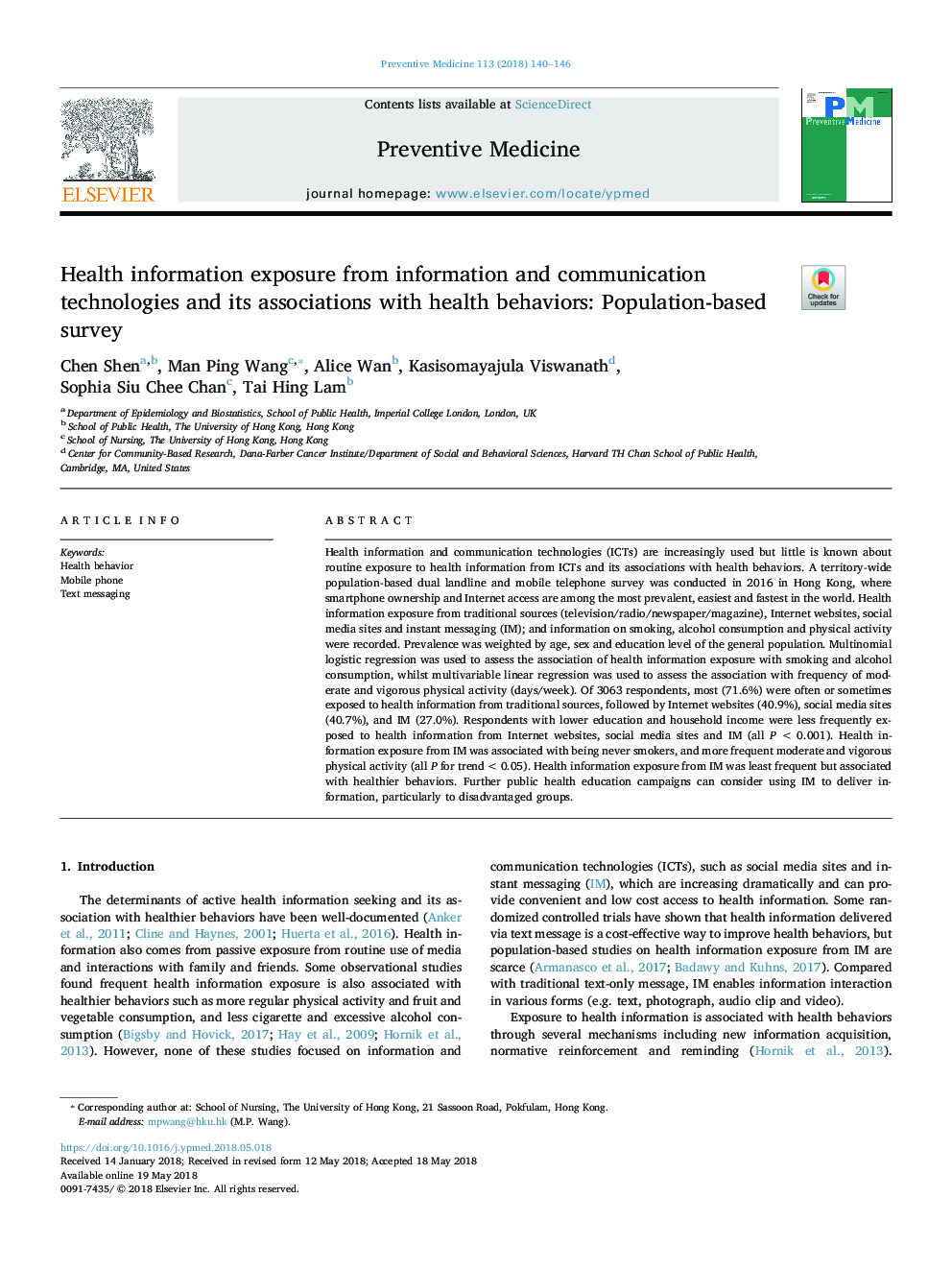| Article ID | Journal | Published Year | Pages | File Type |
|---|---|---|---|---|
| 8693470 | Preventive Medicine | 2018 | 7 Pages |
Abstract
Health information and communication technologies (ICTs) are increasingly used but little is known about routine exposure to health information from ICTs and its associations with health behaviors. A territory-wide population-based dual landline and mobile telephone survey was conducted in 2016 in Hong Kong, where smartphone ownership and Internet access are among the most prevalent, easiest and fastest in the world. Health information exposure from traditional sources (television/radio/newspaper/magazine), Internet websites, social media sites and instant messaging (IM); and information on smoking, alcohol consumption and physical activity were recorded. Prevalence was weighted by age, sex and education level of the general population. Multinomial logistic regression was used to assess the association of health information exposure with smoking and alcohol consumption, whilst multivariable linear regression was used to assess the association with frequency of moderate and vigorous physical activity (days/week). Of 3063 respondents, most (71.6%) were often or sometimes exposed to health information from traditional sources, followed by Internet websites (40.9%), social media sites (40.7%), and IM (27.0%). Respondents with lower education and household income were less frequently exposed to health information from Internet websites, social media sites and IM (all Pâ¯<â¯0.001). Health information exposure from IM was associated with being never smokers, and more frequent moderate and vigorous physical activity (all P for trend <0.05). Health information exposure from IM was least frequent but associated with healthier behaviors. Further public health education campaigns can consider using IM to deliver information, particularly to disadvantaged groups.
Related Topics
Health Sciences
Medicine and Dentistry
Complementary and Alternative Medicine
Authors
Chen Shen, Man Ping Wang, Alice Wan, Kasisomayajula Viswanath, Sophia Siu Chee Chan, Tai Hing Lam,
